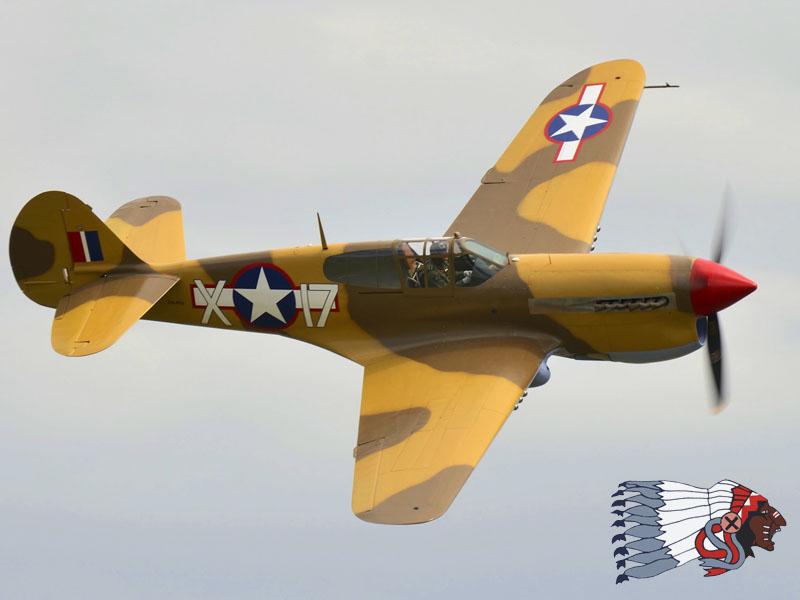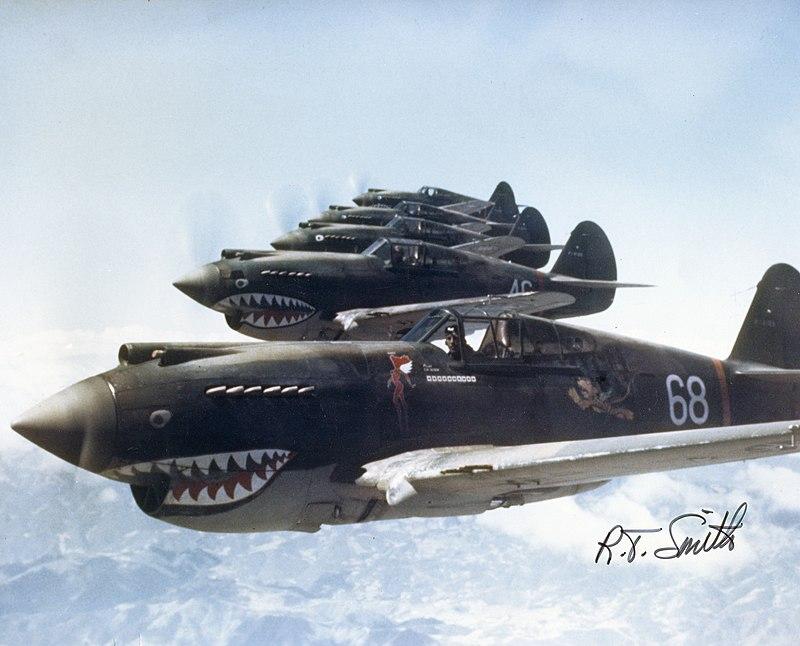Notice the difference in the AVG Tiger Insignia. All the planes in the post are from Hell's Angles Squadron.
A shame that Holloway didn't fly with the AVG. Maybe they should have painted it like Tex Hill's P-40.
List of AVG Pilots.
https://en.wikipedia.org/wiki/List_of_Flying_Tigers_pilots
Hill landed his first kills on January 3, 1942 when he downed two Nates over the Japanese airfield at Tak, Thailand. He shot down two more on January 23, and became an ace on the 24th when he shot down a fighter and a bomber over Rangoon. In March, he succeeded Jack Newkirk as Squadron Leader of the Second Squadron. By the time the AVG was disbanded in the summer of 1942, Hill was a double ace, credited with 12 ¼ victories.
Hill landed his first kills on January 3, 1942 when he downed two Nates over the Japanese airfield at Tak, Thailand. He shot down two more on January 23, and became an ace on the 24th when he shot down a fighter and a bomber over Rangoon. In March, he succeeded Jack Newkirk as Squadron Leader of the Second Squadron. By the time the AVG was disbanded in the summer of 1942, Hill was a double ace, credited with 12 ¼ victories.
On May 7, 1942, the Japanese Army began building a pontoon bridge across the Salween River, which would allow them to move troops and supplies into China. To stem this tide, 2nd Squadron Leader Hill led a flight of four new P-40Es bombing and strafing into the mile deep gorge. During the next four days, the AVG pilots flew continuous missions into the gorge, effectively neutralizing the Japanese forces. From that day on, the Japanese never advanced farther than the west bank of the Salween. Claire Chennault would later write of these critical missions, "The American Volunteer Group had staved off China's collapse on the Salween."
He ended his military career in the Air Force Reserve, retiring as a Brigadier General. He holds the Distinguished Service Cross, Silver Star, Distinguished Flying Cross with three Oak Leaf Clusters, Presidential Unit Citation with Oak Leaf Cluster, Chinese Order of the Cloud and Banner 4th, 5th and 6th grades, 2-Star Wing Decorations, Chinese Victory Medal, Legion of Merit, and British Distinguished Flying Cross.
After the deactivation of the Flying Tigers in July 1942, Hill was one of only five Flying Tigers to join its USAAF successor, the USAAF 23rd Fighter Group, with the rank of major. He activated the 75th Fighter Squadron and later commanded the 23rd Fighter Group as a Colonel. Before returning to the states in late 1944, Hill and his P-51 scratched another six Japanese aircraft.
General Holloway flew against the Japanese in China as commander of the 23d Fighter Group, the successor unit to Gen. Claire L. Chennault's Flying Tiger volunteer force.
After The US entered World War II in December 1941, Holloway was sent to China to observe Chennault's American Volunteer Group (AVG), the Flying Tigers. He became the commander of the 23rd Fighter Group USAAF. During his China tour, Holloway earned status as a fighter ace, shooting down 13 Japanese planes. He returned to the US in 1944.





